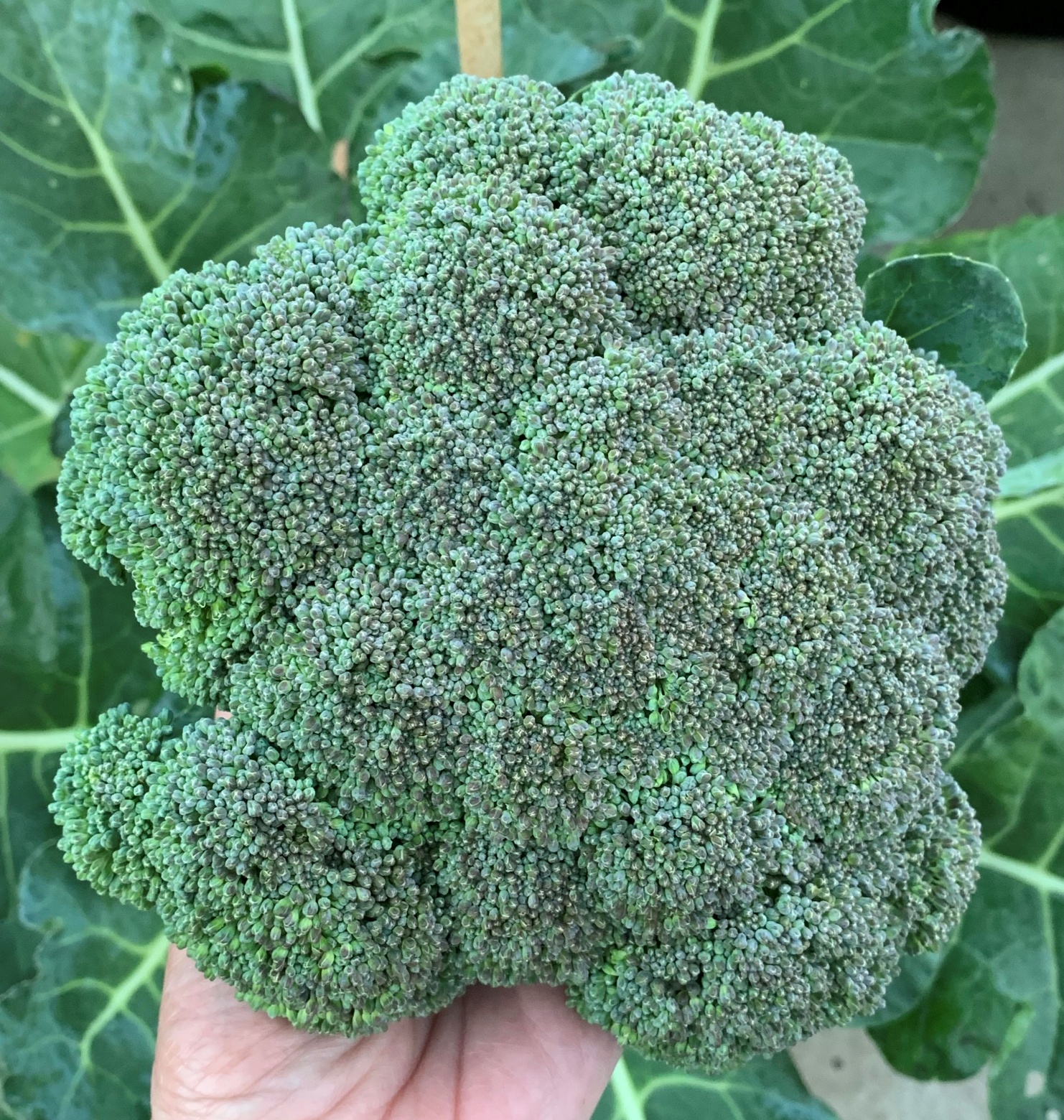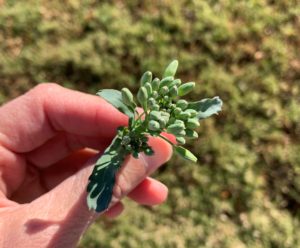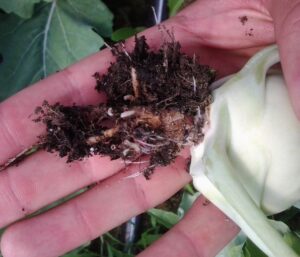Broccoli is a member of the brassica family, along with cabbage, kale, cauliflower, radishes, and Brussels sprouts. The word broccoli is the plural form of the Italian word broccolo, which means “flowering crest of a cabbage.” This beautiful green vegetable originated in Italy, where it is thought to have been cultivated from wild cabbage in the 6th century. It was introduced to England in the 18th century where it was initially known as Italian Asparagus. In 1767, Thomas Jefferson reportedly planted broccoli seeds that had been imported from Italy in his garden. But it would not be until the early 1900’s that broccoli would have a regular seat at the American dinner table.
Remember when you were growing up and your parents tried to convince you to eat your broccoli because it was good for you? They were right! This miniature tree look-a-like is packed with potassium, calcium, iron, vitamins A and K, and more vitamin C more than an orange! It also provides fiber, phytochemicals, and antioxidants.
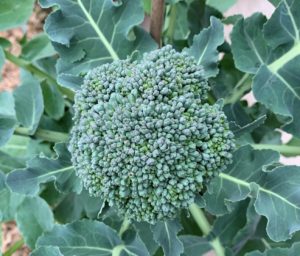
This article contains affiliate links. If you make a purchase using one of these links, I will receive a very small commission at no additional cost to you, and it will help me maintain this website. Rest assured, I only recommend products I actually like!
How to Plant Broccoli
Broccoli is a cold-weather crop, meaning it grows best in cooler temperatures. It requires nutrient-rich, well-draining soil with a pH between 6.0 and 7.0. It is a good idea to test your soil to determine the nutrient content as well as the pH. This can easily be done in just a few minutes with a soil test kit.
In the fall, direct sow broccoli seeds into fertile, well-draining soil about three months before your first frost date. (If you are not sure when the average first frost date is for your area, you can find a link on my Resource page, under Helpful Gardening Links.) Plant seeds between 1/4 and 1/2 inch deep and about 15 to 18 inches apart. The seed packet will provide you with specific instructions for the variety you are planting. If you are growing in containers, you can grow one broccoli plant in a container that is at least 12 inches in diameter. Or one plant per section for those who use the Square Foot Gardening method.
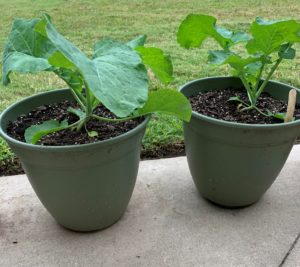
You may need to provide protection from cold weather in the form of a row cover or cold-frame, provided it can accommodate the height of the plants. Or possibly a greenhouse if your area receives extreme weather. Young plants are especially sensitive to cold. If they are exposed to temperatures below 40o F (4o C) for several days, it could cause the plant to form heads too early. In milder climates, broccoli will overwinter and be ready to continue growing once the temperatures rise.
For an early spring crop, start seeds indoors under grow lights 4 to 6 weeks before the last frost date. Transplants can go into the ground when they are about 3 inches tall, and the soil temperature is around 60oF (16o C). Because broccoli starts can be a little flimsy, plant them about 1 inch deeper in the soil than they were in the seed pots. If you live in a warmer climate, you may need to provide a bit of shade from warming daytime temperatures. This is a good application for row cover or shade cloth. Keep in mind, however, that temperatures 80o F (27o C) and above can cause broccoli to bolt, meaning it will begin to flower, ruining any hopes for a harvest. You can learn more by reading 3 Reasons Broccoli Bolts Before Harvest.
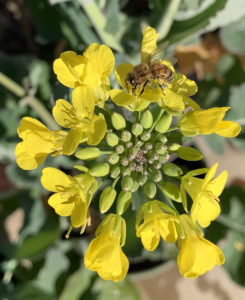
Sun, Soil, Water, and Fertilizer
Broccoli requires at least six hours of full sun. It does best in temperatures between 65° F to 80° F (18o C and 27o C).
Keep the soil consistently moist but not soggy. It may help to add a layer of mulch to preserve moisture.
Broccoli is a heavy feeder, so you will need to fertilize regularly, especially if you are growing in containers. If your plant does not receive enough nitrogen, it can cause it to bolt prematurely. Nitrogen deficiency is first observed in the lower leaves, which turn yellow. (You can learn more about the signs of this macronutrient deficiency in this helpful article.) It is important to act when you first see signs of deficiency as this condition can deteriorate rapidly. A liquid fertilizer like fish emulsion will work faster than a granular one like blood meal.
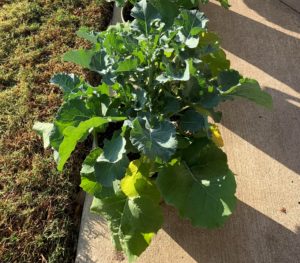
To prevent nitrogen and other nutritional deficiencies, apply a balanced fertilizer when plants are about six inches tall, as well as when the main head emerges. Apply again once the head has been harvested to promote growth of the side shoots or what I call bonus broccoli. Because I grow in containers, I add fish emulsion every few weeks. Container plants use up nutrients quicker than in-ground plants because of the limited amount of soil in the container. Regardless of the kind of fertilizer you use, be sure to follow the directions on the package as too much nitrogen can cause problems as well.
Another type of nutrient deficiency sometimes found in broccoli is boron deficiency. If the soil pH is too acid or too alkaline, it decreases the boron’s bioavailability to the plants. Signs of this deficit are first observed in the plant’s new growth, which turns yellow, or the growing tips, which will curl or wither. If the plant is young, the stem will stop growing and produce only side shoots.
As the problem progresses, the stem will be hollow on the inside and show signs of decay. (If the stem is hollow but does not show signs of decay, this is usually caused by several factors including, too much nitrogen, excessive watering, warm weather, and a low soil pH.)
Boron deficiency is best treated preventatively. If you have experienced it one season, prevent it from happening the next season by adding boric acid, a.k.a. Borax. You will need to research the proper dose for your particular situation as too much boron can cause plant and soil toxicity.
Companion Planting
Looking for good roommates for your broccoli? Try planting onions and chamomile, which are said to improve the broccoli’s flavor. Or herbs such as rosemary, dill, basil, oregano, and mint. These can help deter cabbage moths from laying eggs on the broccoli. Nasturtiums and germaniums also repel pests that are attracted to brassicas (see next section). Lettuce and spinach can do well with the partial shade provided by the broccoli leaves growing above them.
Pests and Diseases
The same pests that are attracted to cabbage love broccoli as well. Cabbage loopers, cabbage worms, aphids, and flea beetles will see the brassicas in your garden as an “all you can eat” buffet. Click on the name of each pest to learn more about them and what you can you do to treat and or prevent them organically.

Clubroot disease is a soil-borne fungus that infects brassicas and causes their roots to develop galls or clubs. The deformed roots restrict the amount of water and nutrients the plant is able to absorb. Above ground signs of an infection may include stunted growth and yellowing leaves that may eventually fall off due to the roots’ inability to draw up water and nutrients.
If you suspect Clubroot, pull the plant and inspect its roots to see if they are deformed. Plants that are heavily infected should be removed and thrown away.
Do not compost infected plants, as most compost piles do not get hot enough to destroy the fungus. If the plants are not infected until later in their development, you may get a harvest, albeit a reduced one.
Clubroot fungus can remain in the soil for 10 to 20 years. The good news, however, is that the fungus can only thrive in acidic soil. Thus, a pH of 7.0 to 7.2 should mitigate the problem. You can learn more about this disease and how to combat it in this helpful article.
Fusarium wilt is disease that can devastate your broccoli plants. You can learn more about this soil-borne fungus here.
Harvest
Broccoli heads are ready to harvest between 50 and 100 days, depending on the variety. The head will be firm and full of tiny green buds that are tightly closed. Many home garden varieties produce smaller heads than those seen in the produce department at grocery stores. The size of a mature head, which can range between 3 and 12 inches, will depend on the variety.
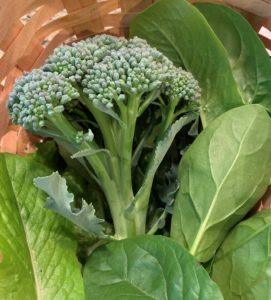
To harvest broccoli, cut the stem at an angle about four to six inches below the head. Store heads in the refrigerator for about one week. Alternatively, you can blanch and freeze them.
If you see the buds begin to loosen you will need to harvest the head right away, even if it has not reached its full size. If you wait, the tiny buds will continue to open until they flower, and it will make the broccoli taste bitter.
After you harvest the main head, new, smaller heads will form throughout the plant. Some varieties produce more of these side shoots than others. Although the side shoots are much smaller, they will taste just as good as the main head. The more you harvest, the more side shoots the plant will produce.
Broccoli varieties that form heads are considered biennial, which means that it takes two seasons before it will produce seed. Sprouting broccolis (see below) are considered annuals and will produce seed if they experience vernalization, which is six to eight weeks of cold accumulation before flowering.
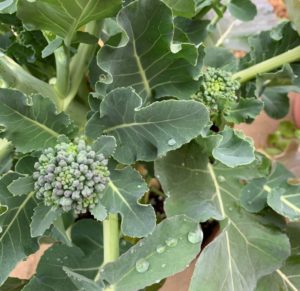
Varieties
When selecting the type of broccoli to grow in your garden, take note of head size, side shoot production, days to maturity, and if the variety is resistant to any diseases. Choose a variety that best meets your preferences.
There are several different types of broccoli from which to choose. Calabrese broccoli is named after Calabria, a region in Southern Italy. It is the most common type of broccoli sold in grocery stores. The heads tend to be larger, and the stalks are thicker than other types of broccoli. Blue Wind, Calabrese, Packman, and Superdome are possible options. DeCicco is ready to harvest in only about 50 days, but it produces smaller heads that measure between 3 and 4 inches. Conversely, Green Goliath produces giant heads that are 10 to 12 inches in diameter.
Unlike Calabrese type broccoli, Specialty broccolis, like sprouting broccoli, stir fry broccoli, and broccolini, are known for their long, slender, edible shoots or stems. They work well in stir fries or can be cooked like asparagus. Bonnie offers a stir fry broccoli called Artwork that is delicious! Sante is a purple sprouting broccoli that has green stalks and small purple florets. When the florets are cooked they turn green.
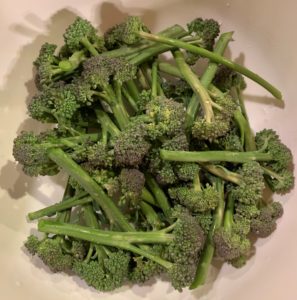
Another specialty broccoli, and one that looks very different from traditional broccoli, is Romanesco. It produces unique, light-green, spiraled heads that are said to have an earthier taste than traditional broccoli.
Chinese Broccoli is an Asian broccoli that is darker green and smaller in size. It has thick leaves and small loose heads. The flavor is stronger than that of its western counterpart, and it tastes somewhat bitter. It is often used in Chinese cuisine.
Broccoli Raab or Rabe (pronounced Rob) looks similar to broccoli but is more closely related to the turnip. Like Chinese broccoli, it produces small heads with edible leaves and tastes bitter. It is most often used in Italian cuisine.
Regardless of which variety or varieties you choose to grow, broccoli is a wonderful crop to grow during the cooler months. Roasted, steamed, stir-fried, or eaten raw, it packs flavor and nutrition into every bite. Just like your parents tried to tell you.
Thank you for reading this article! If you found it helpful, please consider sharing it with others via email or social media!
